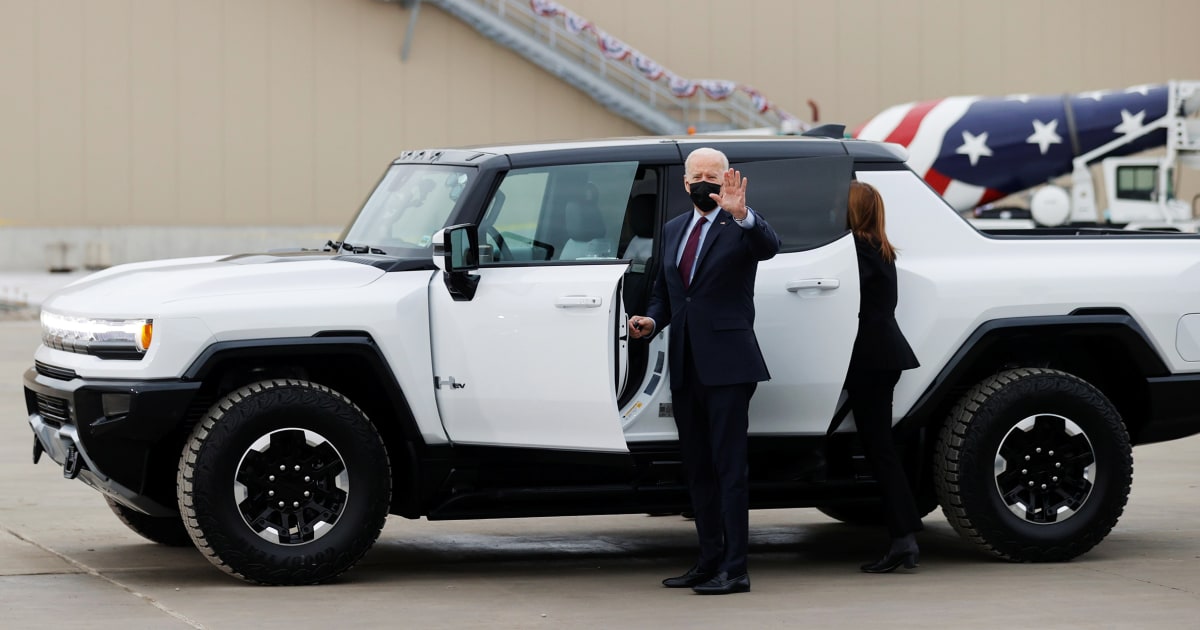
Fresh from signing a new, $1.2 trillion infrastructure bill that provides substantial funds for a nationwide electric vehicle charging network, President Joe Biden is in Detroit on Wednesday to visit “Factory Zero,” the centerpiece of General Motors’ shift to all-electric vehicles.
The assembly plant, which underwent a $2 billion conversion, will produce a variety of battery-electric vehicles, starting with the 2022 GMC Hummer EV. All told, GM plans to roll out at least 30 BEVs by mid-decade and has laid out a plan that would see it shift entirely to battery power for its retail product line by 2035. But it is by no means alone.
A newly released study forecasts the global auto industry will invest at least $500 billion in its push to electrify by the end of the decade. The pace of the transition is accelerating rapidly. Where the 2021 model-year ended with just over a dozen long-range BEVs available for U.S. motorists, industry analysts expect that to grow to more than 50 by the end of 2022.
Meanwhile, at the 2021 Los Angeles Auto Show, which opened on Wednesday, all of the new models making their debut this year are battery powered, including Subaru’s Solterra, concept vehicles from Hyundai and Kia, and the first long-range BEV from Toyota, the bZ4X.
The coming year could be “critical” for the industry as it boosts EV spending and rushes new models to market, said Sam Abuelsamid, principal auto analyst for Guidehouse Insight. At the end of last year, BEVs made up barely 1 percent of the U.S. new vehicle market and manufacturers lost money on every all-electric vehicle they built. But demand more than doubled during the first half of 2021 and has continued gaining momentum since then.
Motor Trend magazine just named the new Lucid Air its car of the year.
Meanwhile, Tesla is now operating in the black and GM CEO Mary Barra is so confident about her company’s direction she now expects to push margins to over 10 percent by the end of the decade.
The rollout of new products is critical, industry observers believe. While early BEVs were largely concentrated in the small sedan and hatchback segment, new offerings are falling more in line with trends in the broader industry, with products like the Ford Mustang Mach-E and GM’s new Hummer.
In addition, several vehicles — including the Tesla Model S and the new Lucid Air — can get between 400 and 520 miles per charge, according to EPA estimates.
But charging is a critical issue, and one that Biden targeted as part of his infrastructure plan. All told, the plan contains over $280 billion for transportation-related projects. That includes $15 billion specifically to promote electrification — which includes the creation of a nationwide network of EV charging stations. Various states, including California, New York and Michigan, are setting up efforts of their own. And several of the largest private charging companies, such as ChargePoint, have gone public this year, raising billions of dollars.
Biden’s infrastructure plan contains over $280 billion for transportation-related projects.
It helps to have the automotive media singing the praises of electrification. This week saw influential Motor Trend magazine name the new Lucid Air its car of the year. On Wednesday, the Lucid sedan was named one of three finalists for North American Car of the Year. The Hyundai Ioniq 5 was among three SUV finalists and the all-new R1T from start-up Rivian was one of the finalists in the truck column.
However, some BEVs scored poorly in the latest Consumer Reports Annual Automotive Reliability study, largely due to ongoing issues with Tesla products. The Model Y was one of the most problem-plagued vehicle in the study. On the other hand, the Kia Niro EV was the second-best of all vehicles, according to owners, and the Ford Mustang Mach-E was another standout, said Jake Fisher, CR’s director of automotive testing.
Whereas Biden is looking for the carrot to encourage EV buyers, a number of state governments are turning to the stick. California, New York and Washington State are all setting in motion plans to phase out internal combustion engines entirely — and not all automakers are pleased with that prospect. Toyota believes electric vehicles aren’t for everyone, the company’s U.S. marketing chief, Mike Tripp, said this week at the 2021 Los Angeles Auto Show. The Japanese giant contends that the best approach to carbon neutrality is with a mix of BEVs, conventional and plug-in hybrids and hydrogen fuel-cel vehicles.
All told, the industry will spend about $515 billion to bring BEVs to market by 2030, according to a new Reuters study. That’s nearly double what an AlixPartners report estimated less than a year earlier.
It all depends, of course, on customer acceptance. But all signs suggest that buyers are rapidly plugging in.
Source: | This article originally belongs to Nbcnews.com










